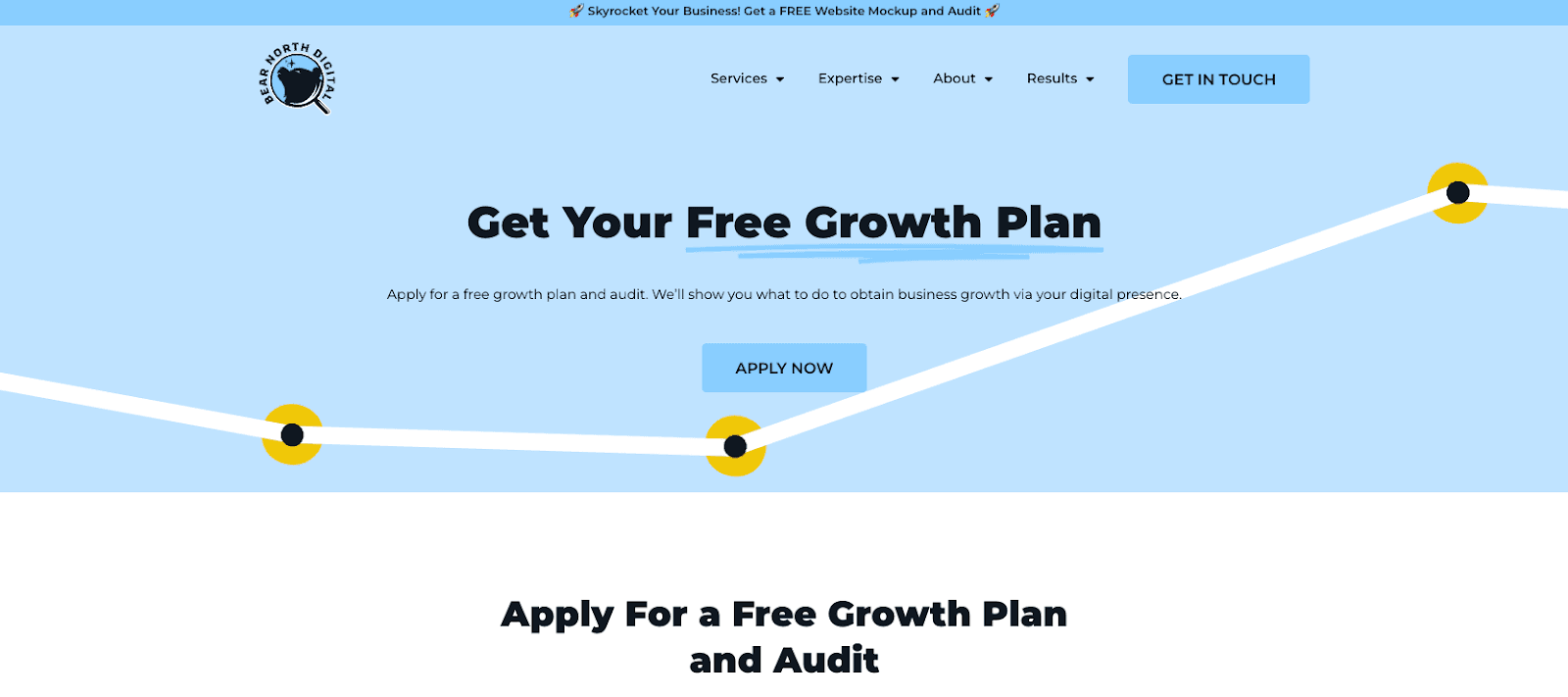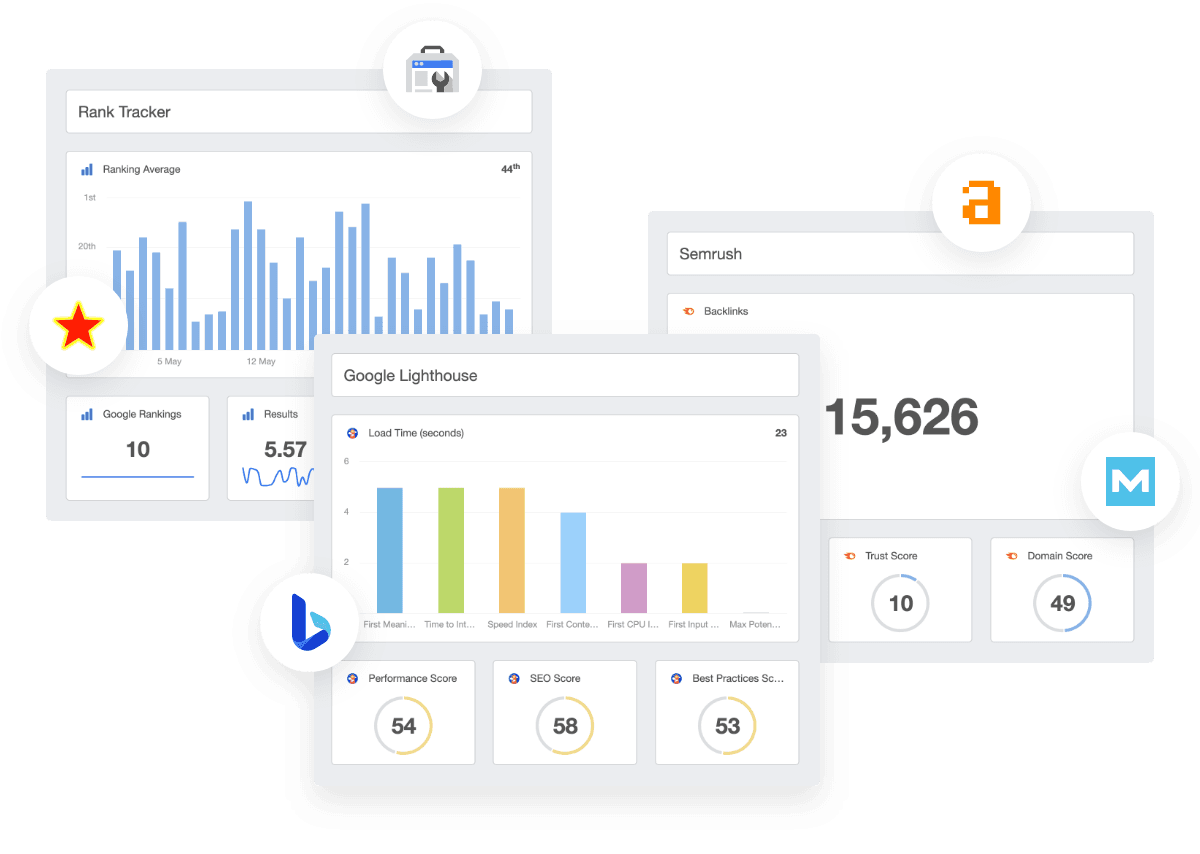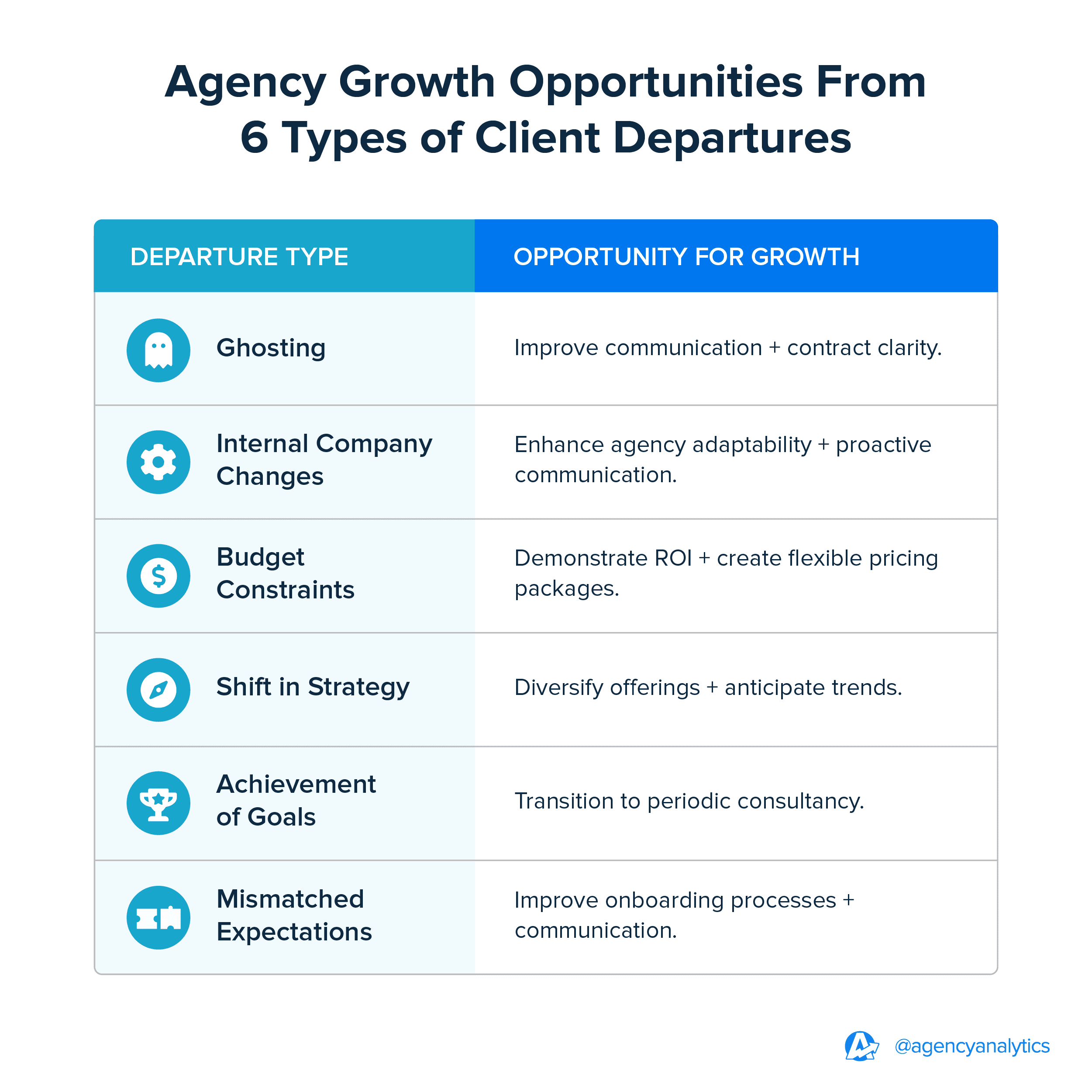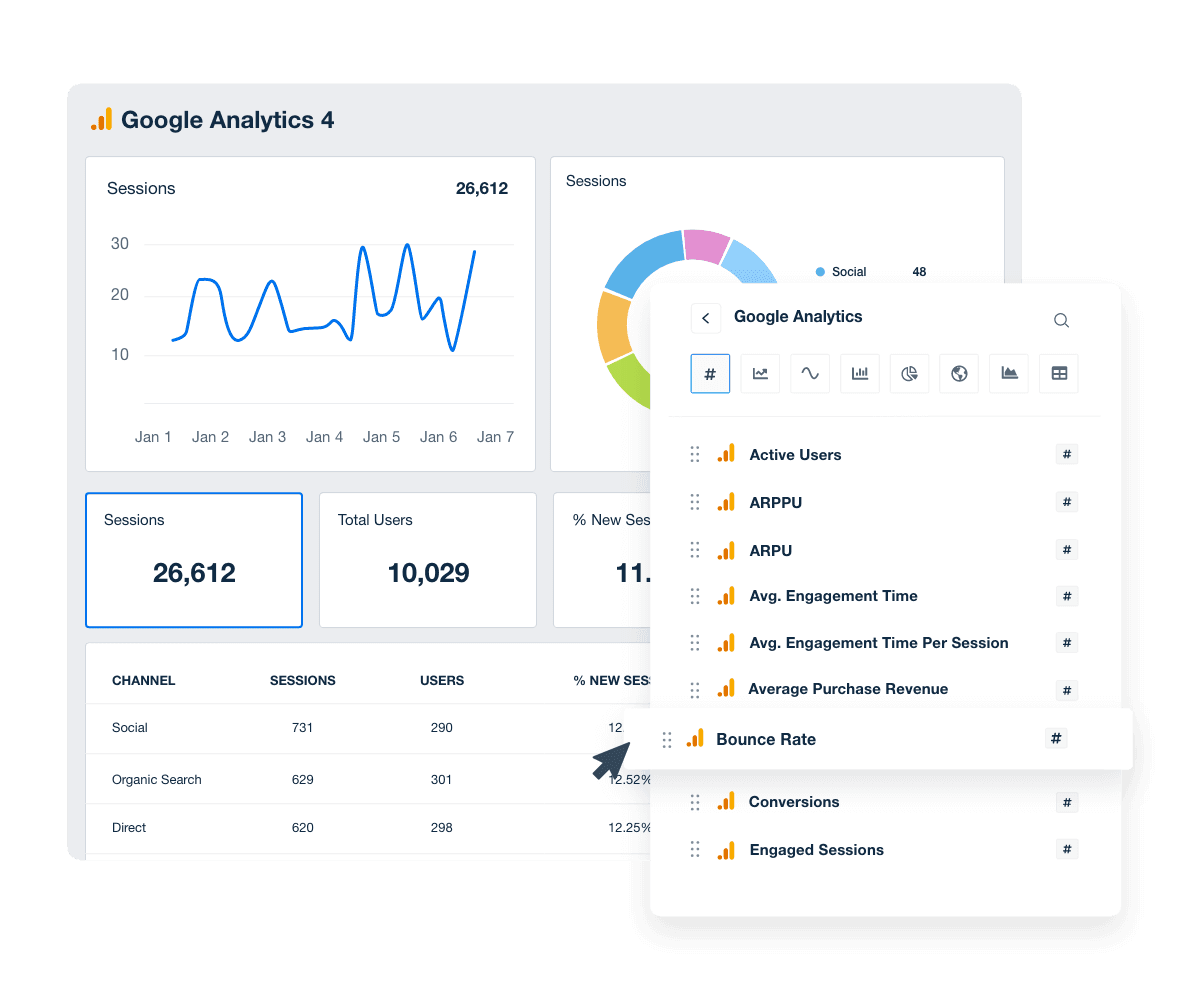Table of Contents
QUICK SUMMARY: Marketing agencies aim to keep clients long-term, building lasting relationships that stand the test of time. Client churn is undeniably something to be avoided, bringing with it a host of challenges–and emotions. But is there a silver lining to client departures? In this article, Joshua Kimmes, founder of Bear North Digital, shares how his agency uses client departures as fuel for future growth.
My journey into the digital agency world began nearly a decade ago as a freelancer, evolving over time into the agency Bear North Digital is today. Now, we have a dedicated team supporting the delivery of services, and my focus has gradually shifted to business development and sales.
The genesis of Bear North Digital was driven by a desire to foster significant growth for businesses. But I couldn’t do that without being transparent with my clients’ marketing data.
I am a staunch advocate for transparency and value in the agency industry, beliefs that are deeply influenced by my experiences with client departures and observations of industry practices–good and bad.
Client churn is never fun, but it does represent a huge opportunity for your agency to learn and foster growth for the future. Today, I’m sharing some of the ways that client departures have actually helped scale my marketing agency.
Gleaning Growth From Client Departures
The old adage, "It's not you, it's me," from the dating world rarely applies in the digital marketing industry. Relationships in our industry tend to be more similar to “Love Is Blind” rather than lifelong commitments.
Bear North Digital specializes in PPC and SEO services, and our clients typically last between six and twelve months, often with clear exit possibilities outlined in their contracts.
It's not unusual, therefore, to occasionally encounter the inverse sentiment—"It's not me, it's you"—spoken with a hint of levity.
Yet, this presents an invaluable perspective shift.
Instead of shying away from such feedback, embracing it as an opportunity for introspection and growth is perhaps one of the most constructive approaches we’ve adopted.
Acknowledging our role in a client's decision to part ways opens the door to profound learning and improvement. It compels us to examine our processes, communication, and service delivery through a critical lens, encouraging us to identify and rectify our shortcomings.
Each client departure, while initially disheartening, is a stepping stone towards refining our practices, enhancing our client relationships, and ultimately, driving our agency's growth forward.
By owning our part in these separations and viewing them as opportunities rather than setbacks, Bear North Digital focuses on transforming our approach to client management, service delivery, and business development.
This mindset fosters a culture of continuous improvement and solidifies our commitment to delivering exceptional value and transparency in all our engagements with current or future clients.
A Tale of Two Client Departures
To further illustrate how our agency has used client departures to fuel future growth, l’d like to share the stories of two notable client departures, and what Bear North Digital learned from each of them.
The First Departure: A Learning Curve
My first significant client departure stands out as a pivotal moment—a wake-up call that shaped our approach to client relationships and quality control.
This client was the cornerstone of our agency, receiving my undivided attention due to their importance to our financial stability and growth. However, as Bear North Digital expanded and our client base grew, my ability to provide the same level of dedicated attention naturally diluted.
At this juncture, I hadn't yet built a team capable of upholding the high standards of quality and care that I had set. This shift in focus was the underlying reason for our first significant client departure.
Interestingly, when the client decided to part ways, it wasn't due to dissatisfaction with our services. They had achieved their goals and were ready to move on. Despite this, the experience illuminated several crucial insights for me and my team.
Lessons Learned: The Importance of Clarity and Integrity
This departure underscored the importance of clear communication and the commitment to fulfill the agreed scope of work.
In an industry often clouded by ambiguity and lofty promises, maintaining transparency and integrity in every client interaction became our mantra. This lesson taught us that success in the agency space is not just about delivering results but also about communicating and managing client expectations throughout the project lifecycle.
Reflecting on this first major client departure, it's clear that it served as an important learning opportunity. It pushed us to reevaluate and refine our approach to client service, team development, and marketing agency project management.
These changes have not only improved our client satisfaction rates but also strengthened our internal culture, making Bear North Digital a more resilient and client-focused agency.
The Price-Sensitive Departure: Adapting to Budgetary Realities
One of the more common yet challenging reasons for client departures is budget constraints—a situation that became all too familiar during the COVID-19 era. Businesses were under unprecedented financial pressure, leading to a wave of clients canceling or pausing their agency partnerships.
In many of these cases, the conversation wasn't about the value we were providing; it was purely a matter of survival as revenues plummeted and budgets tightened. This period underscored a fundamental aspect of the agency business model: the necessity for client revenue to justify the expense of our services.
However, the point I keep emphasizing is that every challenge brings an opportunity for growth and adaptation.
The pandemic, while initially causing a significant downturn in business, prompted Bear North Digital to rethink and quickly pivot the service offerings we provided.
Recognizing the widespread layoffs and budget cuts faced by our clients and potential clients, we launched our Growth Plans.

Image: Growth Plans–a new service offered by Bear North Digital to offer CMO services to mid- and large-sized businesses.
These plans were designed to offer fractional Chief Marketing Officer (CMO) services to mid and large-sized businesses at a fraction of the cost of hiring a full-time employee (FTE)—specifically, we could deliver the same level of expertise and results at 60-70% of the cost of a FTE.
This strategic pivot addressed the acute need for cost-efficient yet effective marketing leadership during a time of widespread financial strain.
Lesson Learned: Emphasizing ROI and Flexibility
The transition to offering Growth Plans was a turning point for Bear North Digital. It forced us to become even more focused on demonstrating tangible return on investment (ROI) to our clients.
Proving the value of our services became even more important as businesses scrutinized every expense. Our ability to articulate and deliver clear, measurable outcomes has since become a cornerstone of our value proposition.
This shift highlighted the importance of flexibility in our service offerings. By tailoring our packages to meet the evolving needs and financial capabilities of our clients, we navigated through a challenging period while emerging stronger and more adaptable.
How Improved Client Reporting Increased Retention
In the early stages of Bear North Digital, processing client departures was notably challenging.
Each goodbye felt intensely personal, particularly in instances where I believed my performance could have been improved. This period was fraught with self-doubt and reflection as I grappled with the reality that not every client relationship would be a success story.
However, it's through these departures that Bear North Digital truly began to take shape. Every setback was a lesson in disguise, teaching me the critical importance of areas I had previously overlooked—communication being a prime example.
Initially, my approach to client reporting was sporadic at best, limited to monthly reports or significant developments.
It was a hard lesson to learn that clients appreciate transparency and regular engagement far more than I had assumed.
This realization led to the creation of the "North Star Navigator"—a weekly dispatch designed to keep our clients informed and engaged.
These updates offer a clear view of current progress, completed tasks, and upcoming plans. It was a significant shift toward prioritizing open, consistent communication and taking responsibility for keeping our clients in the loop.
The transformation in client feedback was immediate and overwhelmingly positive. This change improved our client relationships and instilled a culture of accountability and transparency within our agency.

Automate and schedule reports to be sent to clients daily, weekly, monthly, or at a custom pace. For further transparency, grant clients access to live dashboards with 24/7 data–try it free for 14 days!
Leveraging Lead-in Offers To Mitigate Client Departures
As I previously mentioned, transparency and honesty are the cornerstones of our interactions– particularly during the sales process.
I've learned the importance of setting clear expectations about what working with Bear North Digital entails. If potential clients hesitate regarding budget or project scope, I advise against moving forward. Pursuing additional revenue at the cost of client satisfaction is a trade-off that's not in our best interest.
To further mitigate mismatches and ensure a harmonious working relationship, we've adopted an approach that emphasizes lead-in offers.
Engaging new clients on smaller or one-time projects, like a website build, provides a practical glimpse into the dynamics of working together.
This strategy serves a dual purpose: It allows us to deliver value while assessing the compatibility of our working relationship.
Integral to this process is our "no assholes" policy, which has become a guiding principle for our team. This framework ensures that we engage with clients who are not only a good fit in terms of project needs but are also kind, professional, and easy to work with.
If a potential client doesn't meet these criteria, we're more inclined to have that difficult client conversation and forego further opportunities with them. This approach has been crucial in maintaining a positive and productive working environment, emphasizing quality relationships over quantity.
By embracing these strategies, we've created a more sustainable business model that prioritizes long-term satisfaction for both our clients and our team. Client departures, while still part of our reality, have become less frequent and more understandable, allowing us to focus on building and nurturing relationships that align with our core values.
6 Types of Client Departures
As a marketing agency owner, understanding client exits is less about damage control and more about uncovering opportunities for growth, reflection, and improvement. Recognizing the various types of departures provides valuable insights into your agency’s operational strengths and areas for improvement.
Here are six different types of client departures, offering insights into what each teaches an agency leader and how to use these lessons to strengthen operations and client relationships.

1. Ghosting
Ghosting is perhaps the most disheartening form of departure. It occurs when a client suddenly becomes unresponsive without any prior warning or explanation.
Early in my career, this was not uncommon, often resulting from a lack of formal agreements, mismatched expectations, or simply a poor fit between agency and client. I even had one client who didn’t have the authority to hire a freelancer. It was totally my bad. Since starting Bear North Digital, I now understand how to set and manage client expectations.
2. Internal Company Changes
Slow and sometimes predictable, a client may experience internal company changes. These departures occur when shifts within the client's organization—such as leadership changes, budget reallocations, or strategic pivots—affect their capacity or need for agency services.
Although these changes are beyond our control, they remind us of the importance of adaptability and ongoing communication.
Agency Tip: Keep a pulse on the internal workings of your client’s business as much as possible. If your client hires a new sales employee, for example, don’t just send a welcome email. Get on a call with your team and the new point of contact, and be proactive!
3. Budget Constraints
Economic downturns, shifts in priorities, or internal financial reassessments lead clients to tighten their belts, often at the expense of their marketing budgets.
While sometimes temporary, these departures highlight the need for agencies to demonstrate value, clear ROI, and adapt to changing financial landscapes.

Create custom, comprehensive, white labeled client reports in as little as 11 seconds to effortlessly demonstrate your agency’s ROI. Try AgencyAnalytics free for 14 days!
4. Shift in Strategy
Sometimes, clients decide to change their business or marketing strategy in ways that no longer align with the services the agency provides. This could be a pivot to a different market, a new product launch, or a change in their marketing approach. These departures spur agencies to diversify, launch new service offerings, and stay ahead of market trends.
5. Achievement of Goals
On a more positive note, some clients may depart because the agency successfully met their objectives.
Whether it’s a project-based engagement that concluded satisfactorily or the client has grown to the point of bringing services in-house, these departures are a testament to the agency’s effectiveness.
Long-term and short-term contracts that were fulfilled offer an opportunity to celebrate success and potentially transition the relationship into a consultancy or periodic check-in basis.
6. Mismatched Expectations
Despite the best initial consultations, sometimes there's a fundamental disconnect between what the client expects and what the agency delivers.
This could stem from miscommunication, a lack of clear goals, or unrealistic client expectations. In these situations, agencies should refine their client onboarding processes, set clearer expectations from the outset, and improve communication throughout the project lifecycle.
Understanding these different types of departures helps agencies to better navigate the complexities of client relationships.
The Biggest Lessons We’ve Learned from Client Departures
Bear North Digital has harnessed several insights from client departures. Each insight has played a pivotal role in improving the agency, leading to better client retention long term.
1. Feedback is Gold
The value of feedback, particularly through client exit interviews or direct conversations, cannot be overstated. While it might be uncomfortable, the insights gained are invaluable. These discussions display the importance of open, honest communication and have been instrumental in refining our approach to service delivery.
2. Proactive Relationship Management
Regular check-ins and adaptive service adjustments have become cornerstone strategies for maintaining and nurturing client relationships. Our biweekly or weekly calls, uncommon in their frequency, demonstrate our unwavering commitment to our clients' success, setting a new standard for agency-client engagement
3. The Continuous Progress Update
The introduction of the "North Star Navigator" and comprehensive access to project management and analytics tools like AgencyAnalytics highlight our dedication to transparency and accountability. This approach addresses a common pain point among clients regarding visibility into agency actions and outcomes, fostering a deeper understanding and appreciation for the work being done on their behalf.
Agency Tip: Combine all of your reporting and progress updates with a customer management tool like AgencyAnalytics. Our weekly reports are easy to put together because everyone on our team has access to a client’s dashboard, and we determine when or how much access our clients receive.

Choose exactly who has access to what information in client reports and dashboards with AgencyAnalytics. Try it free for 14 days!
The Silver Lining in Client Departures
Reflecting on our journey, the growth spurred by client departures has been invaluable. It has instilled a culture of continuous learning and adaptability, ensuring that we remain responsive to the needs and expectations of our clients. These experiences have shaped Bear North Digital into a more robust, client-focused agency, committed to delivering unparalleled service and value.
Client departures have led to significant improvements in process at our agency, including:
Diversified service offerings, such as our Growth Plans, which emerged as a direct response to market needs highlighted by client feedback.
Enhancements to our onboarding process and a steadfast, client-centric approach have further solidified our ability to deliver exceptional value.
Resilience, coupled with a mindset that views departures as opportunities for growth. This perspective has driven us to continuously innovate and adapt, ensuring that Bear North Digital remains at the forefront of the digital agency space.
The next time one of your clients decides to part ways, take a page out of our book and use the goodbye as fuel for future growth.

Track your marketing agency’s key performance indicators in a dedicated digital marketing dashboard. Start your 14-day free trial today.

Written by
Josh is the heart behind Bear North Digital, a boutique marketing agency that helps eCommerce, B2B, and service-based organizations through tailored growth marketing plans that deliver real results.
See how 7,000+ marketing agencies help clients win
Free 14-day trial. No credit card required.






